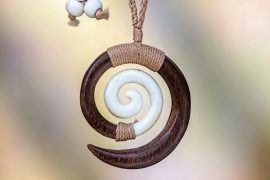The World Peace Project: A Global Art Initiative
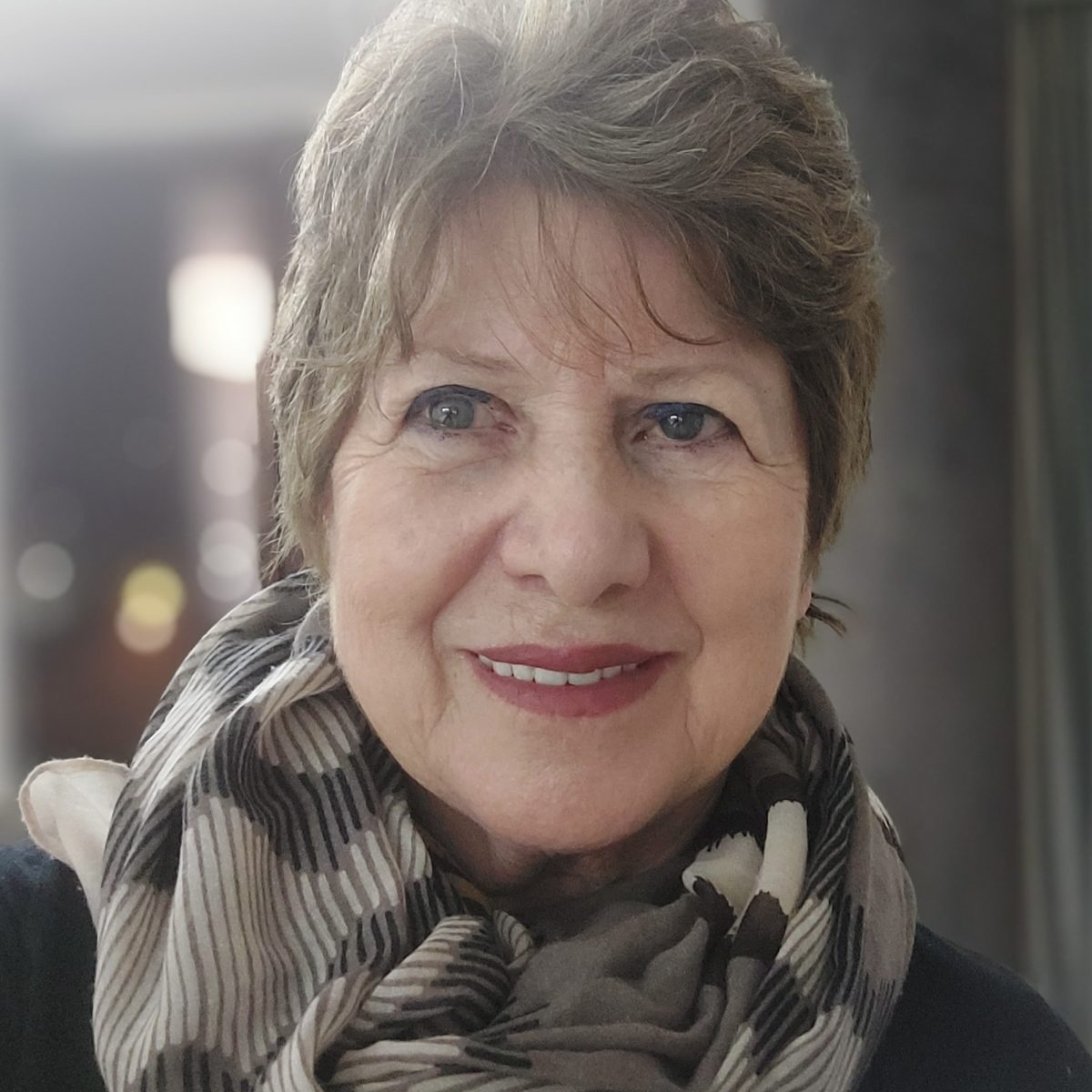
Before retiring from the United Nations to help launch Novica, I dedicated my career to working in war-torn countries around the world. I especially found great purpose and inspiration while assisting refugees, and also while participating in complex peace processes, including those in El Salvador and Bosnia-Herzegovina.
When we launched Novica in 1999, my efforts shifted to creating another type of positive influence – providing new fair trade opportunities for underserved artists and artisans in emerging markets around the globe, while at the same time helping bridge the vast divides between the world’s diverse peoples and cultures through art.
Naturally, when the World Peace Project: A Global Art Initiative was first proposed by a Novica team member in 2004, and again in 2022 for a new second showcase, both times we said “Yes, absolutely!” Our goal in hosting and promoting the World Peace Project is to help spark small and large conversations about peace. This year we’ve decided to host the World Peace Project as a permanent, evolving exhibition.
We invited interested artists and artisans in our global network to share their visions of personal, regional, or world peace. For each fine art submission, the artist/artisan was asked to share their ideas about peace. Their replies have now been translated and posted alongside each corresponding work of art. All are fascinating and enlightening to read.
What can you do today to help create conversations around peace? We request that you share this article, or this link to the World Peace Project. And please share your favorite World Peace Project artwork via social media – along with your own thoughts and ideas. Consider displaying one of these exceptional peace paintings in your home or workplace, to generate conversations about peace with your visitors. Some of us may choose to wear eye-catching peace-themed jewelry designs as conversation starters, which will undoubtedly spark meaningful dialogs with admiring strangers. Imagine those conversations, and where they might lead.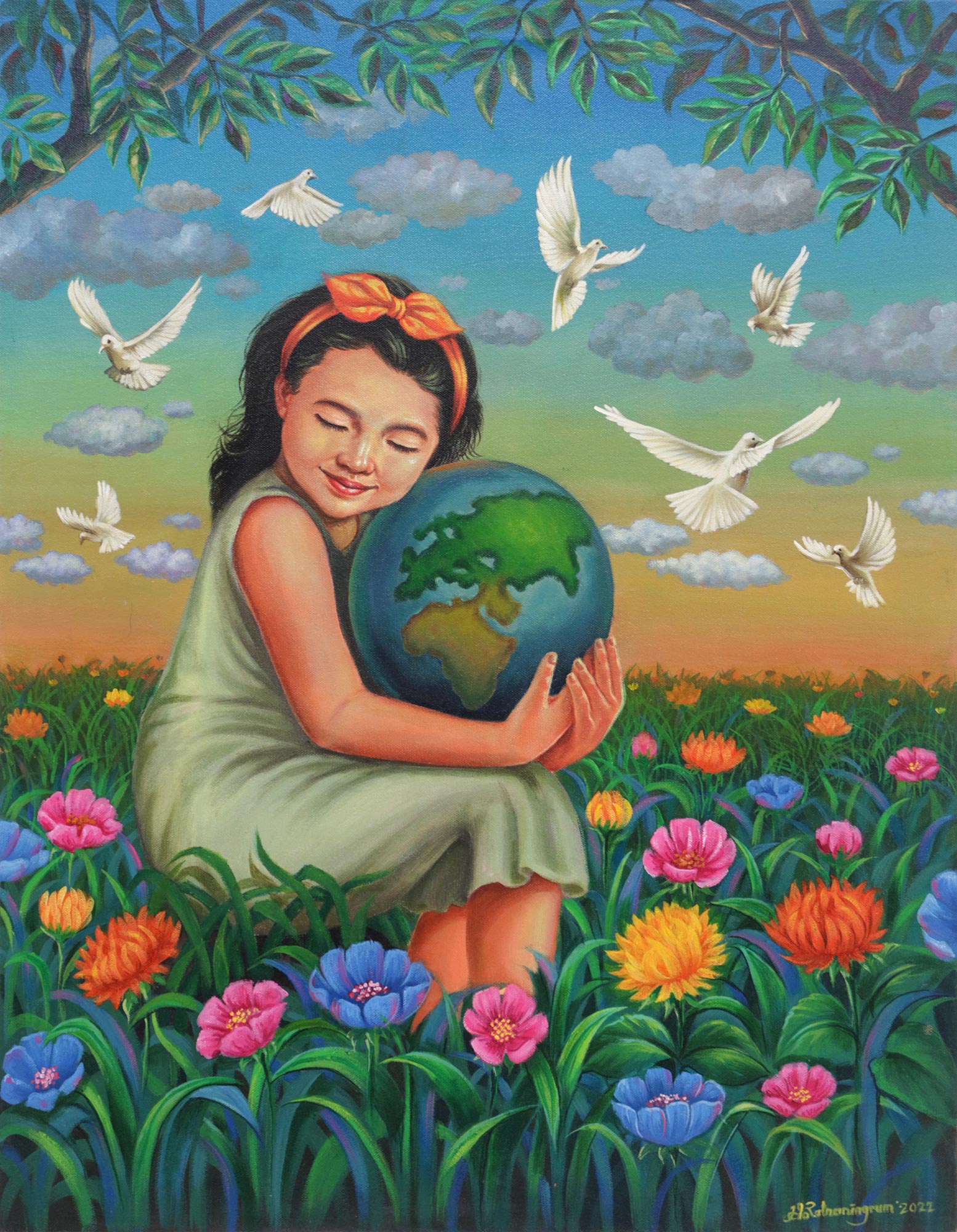
Who knows what positive changes might result in our own lives, and the lives of those around us, simply by actively starting conversations about peace. And by looking for ways – both small and large – to actually implement peace in our own lives.
This week, I have carefully viewed all the World Peace Project submissions. The four peace art categories this year include paintings, sculptures, textiles, and jewelry. Each submission is truly inspiring, and I do encourage you to view them all – and especially to read the artisans’ accompanying stories.
Here are just a few of my favorites, along with my personal observations:
The paintings category is incredible. Each painting is so unique and inspiring, and each carries a deep meaning from the artist. The painting above, Child’s Affection for World, by Ida Ratna Ningrum, in Indonesia, captured my attention for two reasons. One, because our natural environment is so important to peace in the long term. I believe that in the future our world’s disputes will be increasingly about water and our other natural resources – so the health of our planet is an important aspect of current and future peace discussions. And two, because I believe it is crucial for our younger generations to be taught the essential importance of peace, and to be taught the skills to help achieve peace – including nonviolent conflict resolution. This painting beautifully summarizes those two timely messages, so I’ve decided to highlight it here.
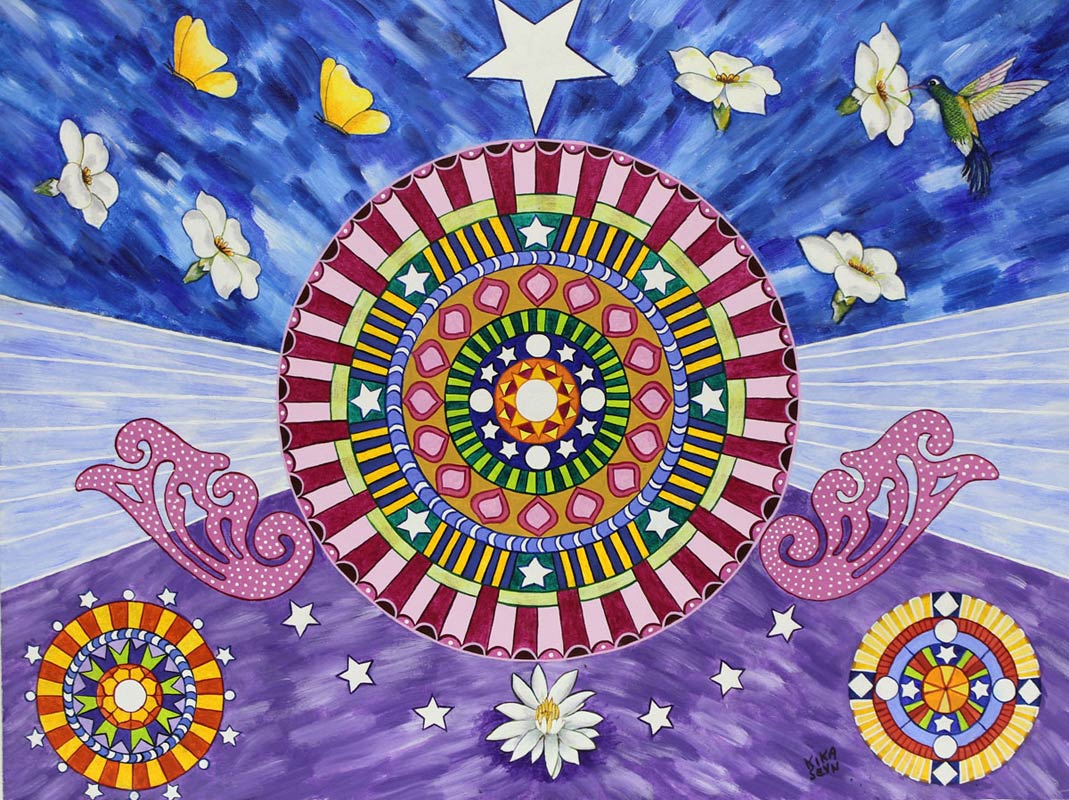 I would love to read your comments about Ida’s painting, and any of the other works of art in our new World Peace Project collection. Please share your thoughts with me in the comments below. We’d love to hear from you.
I would love to read your comments about Ida’s painting, and any of the other works of art in our new World Peace Project collection. Please share your thoughts with me in the comments below. We’d love to hear from you.
I am also especially captivated by this painting (above), Mandala of Forgiveness, by Kika Sevn in Brazil. Kika conveys to us such a centrally important concept to peace – that of forgiveness. For peace to advance at all levels – from within our personal lives to the external world at large – it is so important for each of us to learn to forgive, to release resentments, to not harbor unresolved disputes. It is necessary for us to discuss concerns, of course. Let’s find ways to do so that generate constructive resolutions.
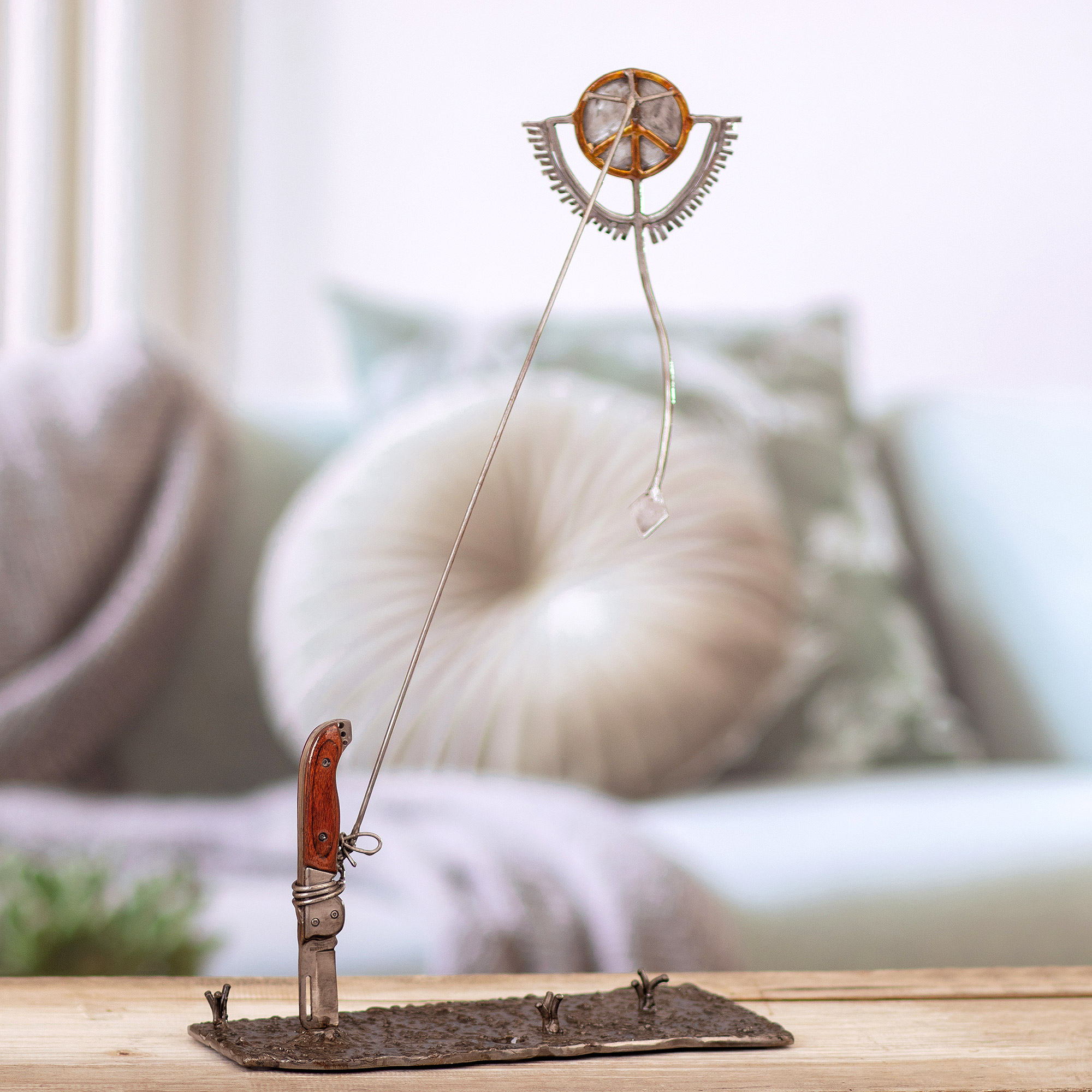 In the sculpture category I have many favorites. But at Novica when we discuss Burying Weapons, the knife sculpture by Miguel Mejia in Peru, such a smile of admiration comes to my face. Here is an artist who truly lived a peace negotiation, during a dangerous personal crisis. Miguel’s resulting sculpture is a true testament to peace, and his accompanying story is a great example of a successfully negotiated peace accord. Be sure to read his full related story at the link above.
In the sculpture category I have many favorites. But at Novica when we discuss Burying Weapons, the knife sculpture by Miguel Mejia in Peru, such a smile of admiration comes to my face. Here is an artist who truly lived a peace negotiation, during a dangerous personal crisis. Miguel’s resulting sculpture is a true testament to peace, and his accompanying story is a great example of a successfully negotiated peace accord. Be sure to read his full related story at the link above.
In brief, Miguel was walking along a street this summer when he was threatened by an assailant who pressed a knife against his neck. Miguel began a dialog with his assailant, and by doing so learned of the man’s pressing hunger. He offered to buy the man lunch. During that unplanned lunch, the unlikely pair shared their thoughts about life’s struggles. Miguel’s compassion apparently opened the man’s heart and mind enough that Miguel survived with no injuries, and nothing stolen. Before the two parted ways, Miguel purchased the weapon – the knife – disarming his assailant while at the same time helping meet his assailant’s needs. Miguel decided to incorporate that very same knife into his one-of-a-kind sculpture for the World Peace Project.
While we can’t necessarily recommend Miguel’s path for everyone – it was certainly risky – we honor him for his empathy, and are grateful he survived unscathed. Miguel is a man who sat down with the enemy and steered the conversation into a successful peace process and resolution. His story reminds us to always consider the other person’s needs and perspective, to better understand the reasons why things occur.
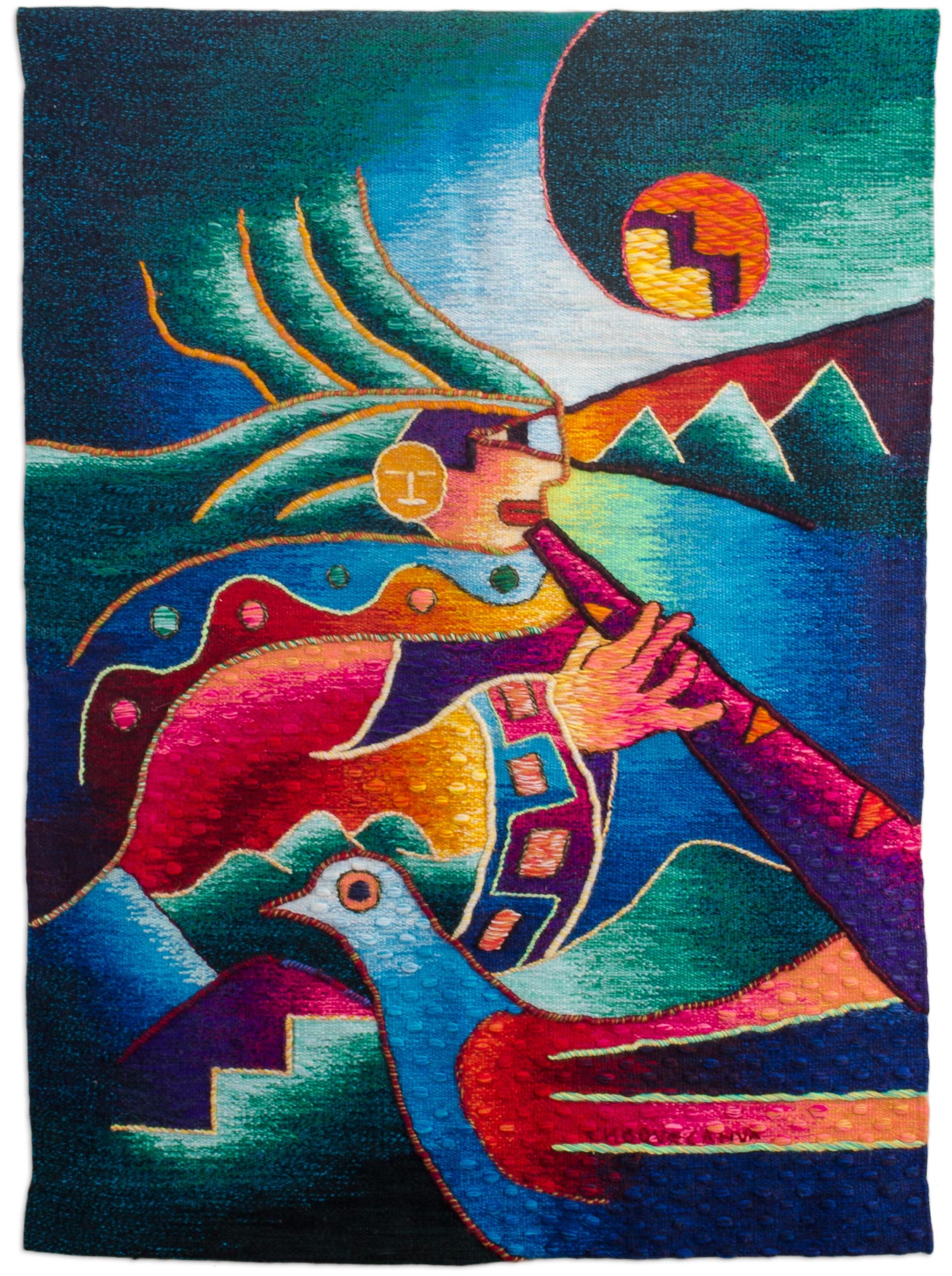
Some people are naturally good negotiators. For others, there are so many great resources nowadays for learning conflict resolution — important in all aspects of our lives. This is a skill we can focus on developing. The World Peace Project textiles category is also tremendously inspiring. One of the tapestries that particularly captured my imagination is Songs of Peace by Tiofilo Choquecahua in Peru. I love Tiofilo’s depiction of a musician spreading peace across continents through song – just as some of our favorite musicians are known to do. Magnificent!
The artisan jewelers who participated in the World Peace Project also did so with great effort and attention to detail. One of my favorite examples is Peace, Love and Affection (below) by Wayan Buana in Bali. Love is very important to peace, of course. People who love human beings won’t kill them, so this concept really impressed me, along with the beauty of Buana’s piece. I also really appreciate his fascinating personal thoughts about peace in his accompanying comments. Be sure to click the link above to read everything he said. Here’s an important excerpt:
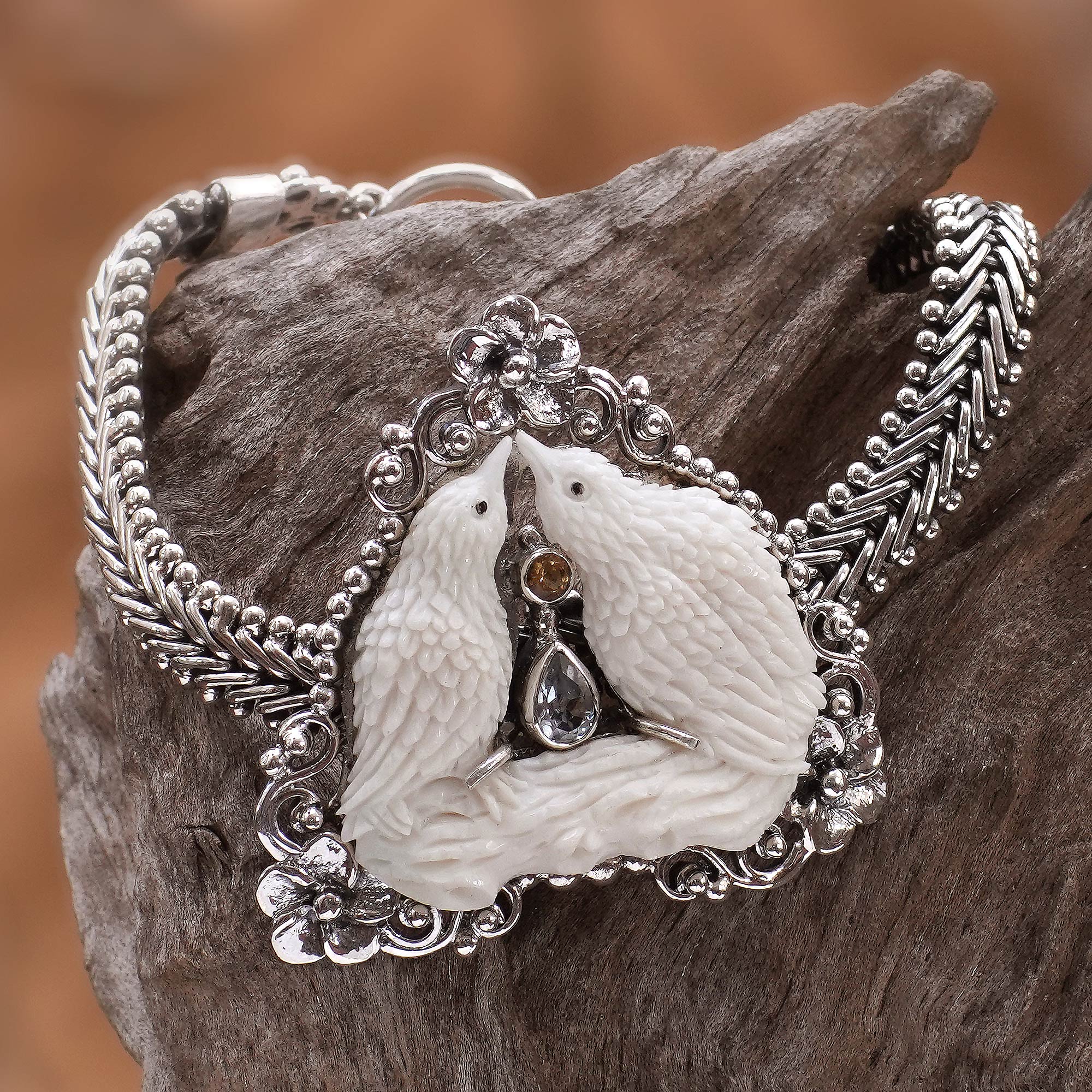 “If a community is able to create peace in terms of living conditions, and in terms of embracing the existence of others in general, the population in each village will be happy to carry out activities in each of their diverse fields, including the farmers who are happy to go to the fields, office employees or civil servants, and so on and on, with the spirit of carrying out duties and responsibilities well for the harmony of all. So that macro-economy and technology will continue to develop positively, and human resources can still be relied upon for world development. If these aspects develop well, then the creation of harmonious relationships with our fellow human beings, and also with the universe, is possible.”
“If a community is able to create peace in terms of living conditions, and in terms of embracing the existence of others in general, the population in each village will be happy to carry out activities in each of their diverse fields, including the farmers who are happy to go to the fields, office employees or civil servants, and so on and on, with the spirit of carrying out duties and responsibilities well for the harmony of all. So that macro-economy and technology will continue to develop positively, and human resources can still be relied upon for world development. If these aspects develop well, then the creation of harmonious relationships with our fellow human beings, and also with the universe, is possible.”
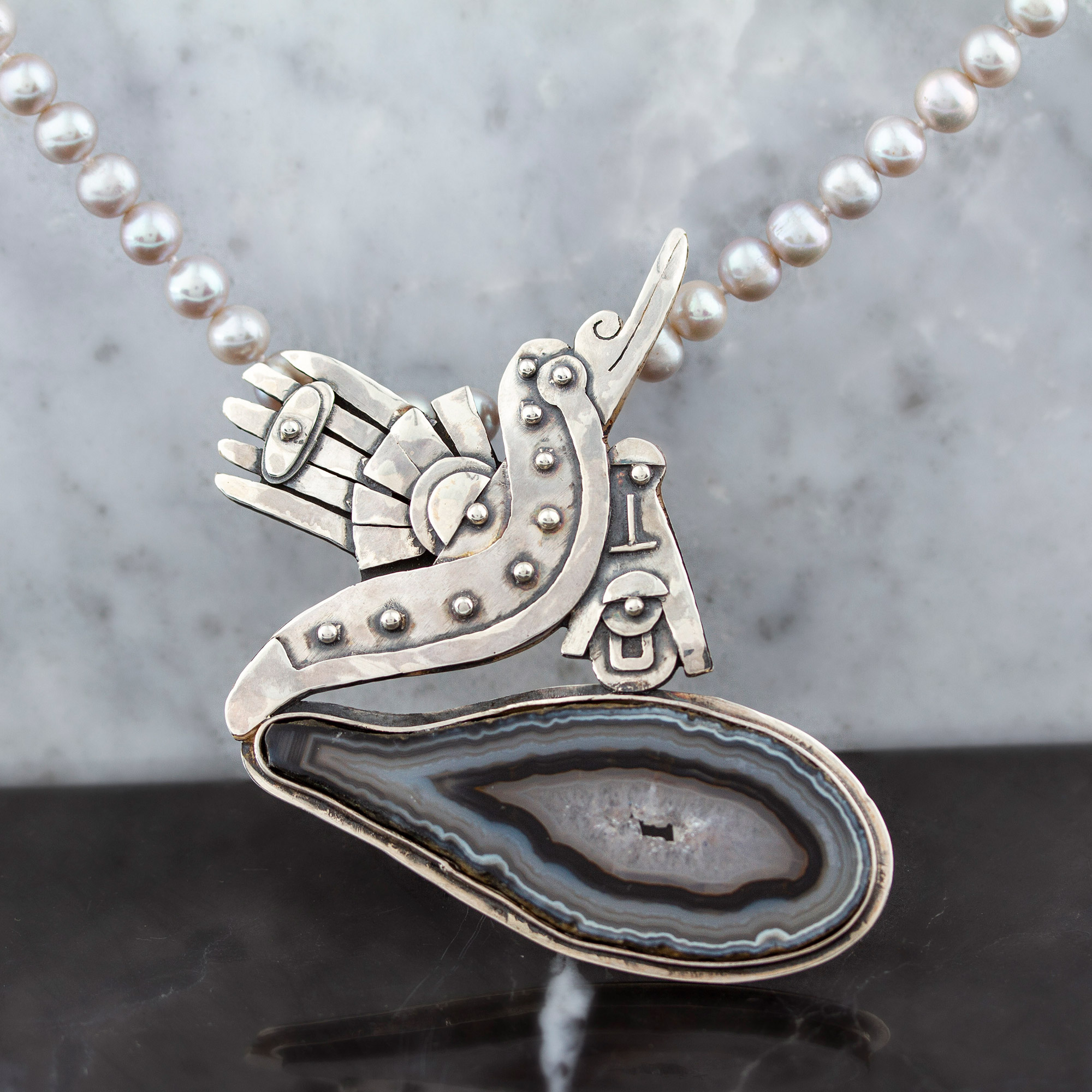
Another of my favorites from the jewelry artisans is a necklace, Maya Bird of Peace and Love, by Rosa Rojo, in Mexico. This also really captured my attention. Rosa explained in her comments the Maya people’s belief that the hummingbird was chosen by the gods as a messenger to carry good thoughts to all human beings. She has depicted the hummingbird uniquely in this striking work of art. Which brings to my mind another important point in discussions about peace processes: Every culture considers peace important. This is a positive starting point!
The World Peace Project shows us how many different perceptions and interpretations of peace there can be. And the artists/artisans’ explanations of how we might best create, maintain, and promote peace are very inspiring to read. We feel this is a vital initiative. We welcome your comments below, and personally I look very forward to reading everything you wish to share.
Meanwhile, my wish is that you will help us spread a shower of peace sparks out into the world today – sparks that will ignite positive ideas, solutions, and reminders for us all. We invite you to join this important conversation!
##



